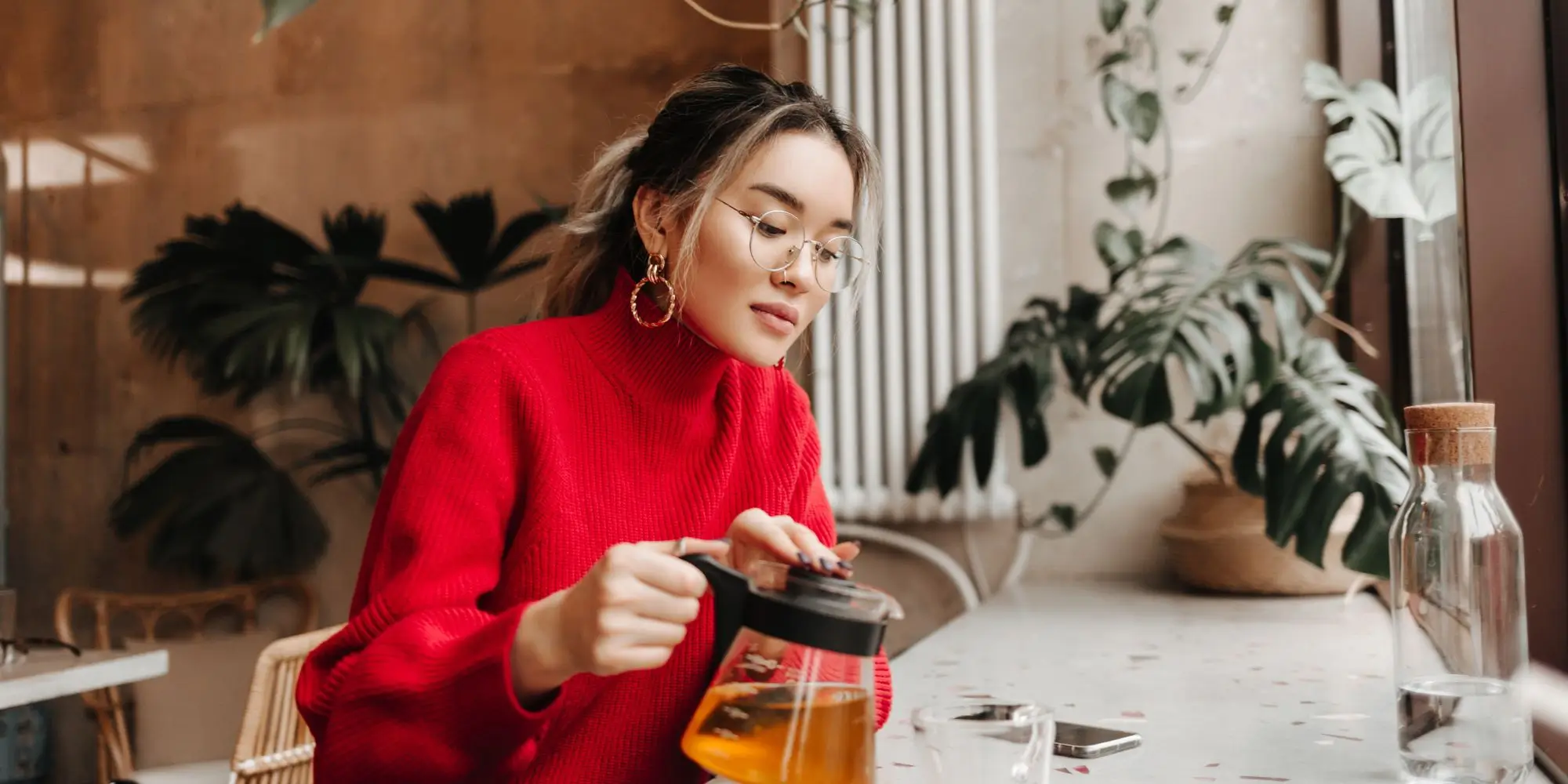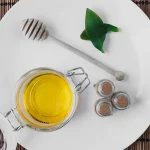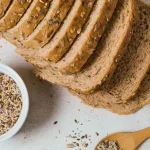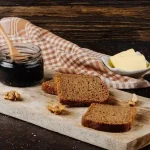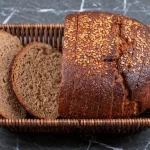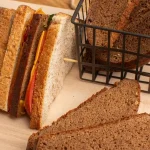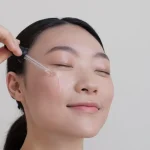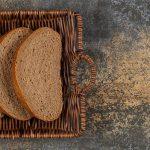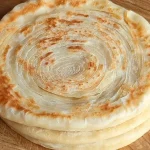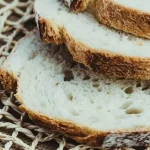Korean retinol tea has taken the wellness and beauty world by storm, promising glowing skin and anti-aging benefits from a simple herbal brew. But what exactly is this mysterious tea, and does it really work? In this comprehensive guide, I’ll share authentic Korean retinol tea recipes, explain the science behind the ingredients, and show you how to make this skin-loving beverage at home.
Related Guide: Korean Retinol Tea Loophole
What is Korean Retinol Tea?
Korean retinol tea is a traditional herbal infusion that gets its name from its remarkable anti-aging and skin-supporting properties—though it contains no actual retinol. This Korean beauty tea has been used for generations in Korean households as part of a holistic approach to skincare that nourishes the body from within.
The term “retinol tea” became popular on social media because the tea’s benefits mirror those of topical retinol: promoting collagen production, reducing inflammation, and supporting skin cell renewal. Korean skincare philosophy has always emphasized that true beauty starts from the inside, and this tea exemplifies that principle perfectly.
What Does Korean Retinol Tea Do?
This Korean tea for aging skin works by:
- Supporting natural collagen production in the skin
- Providing powerful antioxidants that fight free radical damage
- Reducing inflammation throughout the body
- Improving blood circulation for a healthy glow
- Nourishing skin cells with essential vitamins and minerals
- Promoting cellular regeneration and repair
Unlike harsh topical treatments that can irritate sensitive skin, Korean retinol tea to drink offers gentle, internal support for skin health that complements your existing skincare routine.
The 3 Ingredient Korean Retinol Tea Recipe (Viral Version)
This simplified recipe became viral on TikTok and Instagram for its simplicity and effectiveness. It’s the easiest way to start your Korean anti-aging tea journey.
Korean Retinol Tea Ingredients (3-Ingredient Version)
- 1 tablespoon dried persimmon leaves – Rich in vitamin C and antioxidants
- 1 teaspoon green tea leaves – Packed with EGCG for skin protection
- 1/2 teaspoon dried mugwort – Traditional Korean herb for inflammation
How to Make Korean Retinol Tea (Simple Method)
Prep Time: 3 minutes
Cook Time: 7 minutes
Total Time: 10 minutes
Servings: 1 cup
Instructions:
- Bring 1.5 cups of filtered water to 185-190°F (just below boiling)
- Add persimmon leaves to a teapot or infuser
- Add green tea leaves and mugwort
- Pour hot water over the herbs
- Steep for 5-7 minutes, covered
- Strain into your cup and enjoy warm
Pro Tip: Don’t use boiling water, as it can destroy delicate compounds in the herbs. The ideal temperature preserves maximum benefits.
Traditional Korean Retinol Tea Recipe for Wrinkles (Complete Version)
For those seeking the most authentic and potent Korean retinol tea recipe, this traditional blend combines time-tested ingredients used by Korean herbalists for centuries.
Best Korean Retinol Tea Ingredients (Traditional Recipe)
Primary Ingredients:
- 4-5 dried Korean jujube dates (daechu) – pitted and sliced
- 1 small piece of Korean ginseng root (1-inch) – thinly sliced
- 1/2 teaspoon dried mugwort leaves
- 1 tablespoon dried goji berries
- 1/4 teaspoon green tea leaves (optional)
- 2 cups filtered water
Optional Enhancement Ingredients:
- 1 teaspoon raw honey for sweetness
- 1/2 teaspoon dried chrysanthemum flowers
- 3-4 dried persimmon leaves
- Thin slice of fresh ginger for circulation
Recipe for Korean Retinol Tea (Step-by-Step)
Prep Time: 5 minutes
Cook Time: 20 minutes
Total Time: 25 minutes
Servings: 2 cups
Calories: 15-20 per cup
Preparation Steps:
- Prep Your Ingredients:
- Rinse all dried herbs under cool water to remove dust
- Slice jujube dates in half and remove pits if needed
- Thinly slice the ginseng root using a sharp knife or vegetable peeler
- Measure out all other ingredients
- Start the Brewing Process:
- Bring 2 cups of filtered water to a gentle boil in a small saucepan
- Add sliced ginseng root first
- Reduce the heat to medium-low and simmer for 10 minutes
- Add Remaining Ingredients:
- Add jujube slices and goji berries to the simmering water
- Continue cooking for 5 minutes
- Stir in mugwort leaves and green tea (if using)
- Simmer for another 3-5 minutes
- Final Steps:
- Remove from heat and let steep for 2-3 minutes with lid on
- Strain through a fine-mesh strainer into serving cups
- Add honey if desired and stir gently
- Serve warm for maximum benefits
Korean Retinol Tea Recipe Variations
Best Korean Retinol Tea Recipe for Spring (Detox Version)
Perfect for skin purification and renewal:
- Add 1 teaspoon dried dandelion root for liver support
- Include 1/2 teaspoon dried violet leaves
- Add a squeeze of fresh lemon juice
- Steep at 180°F for 8 minutes
Winter Warming Korean Tea Recipe for Skin
Boosts circulation for that healthy glow:
- Add 1 thin slice of fresh ginger
- Include 1 cinnamon stick
- Add 2-3 whole cloves
- Double the ginseng for extra warmth
- Simmer for 25 minutes
Summer Cooling Korean Tea for Aging Skin
Refreshing and hydrating for hot weather:
- Brew as directed, then cool completely
- Serve over ice
- Add dried hibiscus flowers for vitamin C
- Garnish with fresh mint leaves
- Store in refrigerator for up to 3 days
Ingredients in Korean Retinol Tea: The Science Behind Each Herb
Understanding what the ingredients in Korean retinol tea are and why they work helps you appreciate this ancient beauty secret.
Korean Jujube (Red Dates)
Korean jujube dates are the foundation of many traditional beauty teas. These sweet, nutrient-dense fruits contain:
- High levels of vitamin C for collagen synthesis
- Antioxidants that protect against UV damage
- Natural compounds that improve sleep quality (better sleep = better skin)
- Iron and minerals for healthy blood circulation
Korean Ginseng Root
Considered the “root of eternal youth” in Korean culture, ginseng is scientifically proven to:
- Stimulate collagen production through ginsenosides
- Improve skin elasticity and firmness
- Fight oxidative stress that causes aging
- Increase blood flow to skin cells
- Reduce inflammation and redness
Note: Use Korean red ginseng for maximum potency and authenticity.
Mugwort (Artemisia)
This traditional Korean herb has been used for centuries in Korean skincare tea because it:
- Contains powerful anti-inflammatory compounds
- Purifies blood and supports detoxification
- Provides antioxidants for skin protection
- Soothes irritation and redness
- Supports digestive health (which reflects in your skin)
Goji Berries
These bright red berries are packed with:
- Vitamin C and beta-carotene
- Zeaxanthin for skin protection
- Amino acids for skin repair
- Polysaccharides for hydration
Persimmon Leaves
A secret ingredient in many Korean tea retinol recipes:
- Contains 20x more vitamin C than green tea
- Rich in flavonoids and rutin
- Supports capillary health for even skin tone
- Traditional remedy for skin clarity
Green Tea Leaves
The antioxidant powerhouse that:
- Provides EGCG catechins for UV protection
- Reduces inflammation and acne
- Supports fat metabolism
- Contains small amounts of caffeine for circulation
How Do You Make Korean Retinol Tea: Expert Tips
Best Korean Retinol Tea Ingredients to Buy
When shopping for ingredients for Korean retinol tea:
Where to Find Ingredients:
- Korean grocery stores (H-Mart, Hankook Market)
- Asian supermarkets
- Online: Amazon, Mountain Rose Herbs, Korean specialty sites
- Some health food stores carry dried jujube and goji berries
Quality Matters:
- Choose organic herbs when possible
- Look for dried herbs with vibrant color (not faded or brown)
- Korean ginseng should be firm, not soft or moldy
- Jujube dates should be slightly pliable, not rock-hard
Korean Retinol Tea Buy Guide:
- Pre-made tea bags: Convenient but less potent
- Loose dried herbs: Best quality and customization
- Korean herbal blends: Often include multiple beneficial herbs
- Expected cost: $15-30 for enough ingredients for 20-30 cups
Brewing Tips for Maximum Benefits
Temperature Control:
- Too hot: Destroys delicate antioxidants
- Too cool: Doesn’t extract compounds properly
- Sweet spot: 185-190°F for most herbs
- Ginseng: Can handle slightly higher heat (195°F)
Timing Matters:
- Under-steeped: Weak flavor and fewer benefits
- Over-steeped: Bitter taste, harsh on digestion
- Ideal: 5-7 minutes for a simple recipe, 20 minutes for a traditional recipe
Reuse Your Herbs:
- Don’t throw away strained herbs after the first use
- Store in the refrigerator in an airtight container
- Brew a second, milder batch within 24 hours
- Great for a gentler afternoon tea
Korean Retinol Tea Benefits for Skin: What to Expect
Timeline for Results
Week 1-2: Improved Hydration
- Skin feels more supple and moisturized
- Reduced dryness and flakiness
- Slightly improved skin texture
Week 3-4: Visible Clarity
- More even skin tone
- Reduced redness and inflammation
- Subtle improvement in fine lines
- Natural, healthy glow appears
Month 2-3: Anti-Aging Effects
- Firmer skin texture
- Reduced the appearance of wrinkles
- Improved elasticity
- Brighter, more radiant complexion
Long-Term (3+ months):
- Sustained collagen production
- Better overall skin health
- Resilience against environmental damage
- Complement to topical skincare showing enhanced results
Korean Retinol Tea Benefits Beyond Skin
This Korean anti-aging tea recipe supports overall wellness:
- Improved Sleep: Jujube dates promote better rest
- Digestive Health: Herbs support gut function (healthy gut = clear skin)
- Reduced Stress: Ginseng is an adaptogen that helps manage cortisol
- Better Circulation: Improved blood flow benefits entire body
- Immune Support: Antioxidants strengthen immune function
How Often Should You Drink Korean Retinol Tea?
Optimal Consumption Schedule
For Skin Benefits:
- Drink 1-2 cups daily
- Best times: Morning (before breakfast) and evening (before bed)
- Consistency is key: Daily consumption for at least 3-4 weeks
For Different Skin Goals:
Anti-Aging Focus:
- 2 cups daily of the traditional recipe
- Include ginseng every time
- Add extra goji berries
- Drink for 2-3 months minimum
Acne and Inflammation:
- 1-2 cups of mugwort-heavy blend
- Emphasize the green tea component
- Add dandelion root for detox
- Continue for 4-6 weeks
Overall Skin Health:
- 1 cup daily of a simple 3-ingredient version
- Rotate between recipes for variety
- Take 1-2 days off per week
- Sustainable for long-term use
When to Drink Korean Tea Retinol
Morning (Empty Stomach):
- Maximizes absorption of nutrients
- Energizes without caffeine jitters
- Sets the foundation for hydrated skin all day
Evening (Before Bed):
- Jujube dates promote restful sleep
- Allows skin to repair overnight
- Calming ritual for stress reduction
- Avoid green tea if it gives you insomnia
Storage and Preparation Guide
How to Store Dried Herbs
Ingredient Storage:
- Keep dried herbs in airtight glass jars or containers
- Store in a cool, dark place away from sunlight and moisture
- Korean ginseng: Refrigerate for up to 2 weeks
- Other dried herbs: Pantry storage for up to 6 months
- Label containers with the purchase date
Pre-Made Portions:
- Combine dry ingredients in tea bags or small containers
- Make 7-10 portions at once for the week
- Store in an airtight container or zip bags
- Saves time and ensures consistency
Storing Brewed Korean Retinol Tea
Refrigeration:
- Store brewed tea in an airtight container for up to 3 days
- Glass containers are best to avoid plastic leaching
- Reheat gently on stovetop (never microwave)
- Can also enjoy cold as a refreshing skin tonic
Freezing for Convenience:
- Freeze in ice cube trays for single servings
- Pop out cubes and store in freezer bags
- Add frozen cubes to hot water when ready to drink
- Maintains most benefits for up to 1 month
Batch Preparation:
- Make larger quantities by proportionally increasing ingredients
- Divide into daily portions after brewing
- Ideal for busy schedules
- Reheat individual portions as needed
Korean Tea with Retinol: Common Mistakes to Avoid
What NOT to Do
Brewing Errors: ❌ Using boiling water (destroys nutrients), ❌ Steeping too long (creates bitter taste), ❌ Using tap water with chlorine (affects flavor and benefits) ❌ Microwaving reheated tea (damages compounds)
Ingredient Mistakes: ❌ Using old, stale herbs (reduced potency), ❌ Substituting regular dates for jujube (different properties) ❌ Using Panax notoginseng instead of Korean ginseng, ❌ Skipping the straining step (herbs in the mouth aren’t pleasant)
Consumption Errors: ❌ Expecting overnight results (skin changes take weeks), ❌ Drinking irregularly (consistency is crucial,) ❌ Adding too much honey (excess sugar isn’t skin-friendly), ❌ Drinking on an empty stomach if you have gastric sensitivity
Getting the Best Results
✅ Use filtered or spring water
✅ Measure ingredients consistently
✅ Keep a tea journal to track skin changes
✅ Combine with good skincare and hydration
✅ Take before/after photos to see progress
✅ Listen to your body and adjust ingredients
Korean Retinol Tea Recipe for Wrinkles: Enhanced Anti-Aging Version
For those specifically targeting fine lines and wrinkles, this enhanced recipe maximizes anti-aging compounds.
Premium Anti-Aging Blend
Ingredients:
- 6 Korean jujube dates (extra for collagen support)
- 1.5-inch piece of Korean red ginseng
- 1 tablespoon goji berries
- 1 teaspoon dried rose petals (for vitamin C)
- 1/2 teaspoon chrysanthemum flowers
- 1/4 teaspoon licorice root (for brightening)
- 1 small piece of dried deer antler (optional, traditional addition)
- 2.5 cups water
Instructions:
- Simmer ginseng alone for 15 minutes first
- Add jujube and simmer 10 minutes
- Add all other ingredients and simmer for 5 minutes
- Steep off heat for 5 minutes
- Strain and drink while warm
Use: Twice daily for 6-8 weeks to see visible wrinkle reduction.
Nutrition Facts: What’s in Your Cup
Per Serving (1 cup of traditional recipe)
- Calories: 15-20
- Carbohydrates: 4-5g
- Natural Sugars: 3-4g (from jujube)
- Protein: 1g
- Fat: 0g
- Fiber: 1g
- Vitamin C: 8-12mg (10-15% daily value)
- Antioxidants: High levels (ORAC value ~1000-1500)
- Ginsenosides: 5-8mg (from ginseng)
- Caffeine: 5-10mg (if green tea added) – minimal
Nutrient Density Benefits
This Korean beauty tea provides impressive nutrition with minimal calories, making it perfect for:
- Weight management
- Fasting protocols (won’t break fast)
- Sugar-free beauty routines
- Vegan and vegetarian diets
Final Thoughts: Is Korean Retinol Tea Worth It?
Korean retinol tea represents a beautiful intersection of traditional wisdom and modern wellness. While it’s not a miracle cure and doesn’t actually contain retinol, this ancient Korean tea for aging offers genuine benefits backed by both traditional use and modern science.
The best Korean retinol tea recipe is the one you’ll actually make and drink consistently. Whether you start with the simple 3-ingredient version or dive into the traditional recipe with multiple herbs, the key is making it a daily ritual.
Remember: beautiful skin isn’t built in a day. It’s built through consistent, nourishing practices over time. Korean retinol tea is one delicious way to support your skin from the inside out, the way Korean women have been doing for generations.
Start with one cup a day, be patient with the process, and enjoy this warm, comforting addition to your beauty routine. Your skin—and your whole body—will thank you.
Frequently Asked Questions About Korean Retinol Tea
What is the Korean Retinol Tea Recipe?
The Korean retinol tea recipe is an herbal infusion traditionally made with Korean jujube dates, ginseng, and mugwort. A simpler viral version uses persimmon leaves, green tea, and mugwort. Both versions support skin health through powerful antioxidants and anti-inflammatory compounds.
What Are the Ingredients in the Korean Retinol Tea?
The ingredients in Korean retinol tea vary by recipe, but typically include:
- Traditional version: Jujube dates, Korean ginseng, mugwort, goji berries, green tea
- 3-ingredient version: Persimmon leaves, green tea, mugwort
- Optional additions: Chrysanthemum, rose petals, ginger, honey, licorice root
All ingredients are chosen for their skin-supporting, anti-aging properties backed by traditional Korean medicine.
How to Make Korean Retinol Tea at Home?
To make Korean retinol tea:
- Start with the simple 3-ingredient recipe if you’re new to herbal teas
- Source quality dried herbs from Korean grocery stores or online
- Use filtered water heated to 185-190°F (not boiling)
- Steep herbs for 5-20 minutes, depending on the recipe
- Strain and enjoy warm, 1-2 times daily
Does Korean Retinol Tea Really Work for Skin?
Yes, Korean retinol tea can support skin health when consumed consistently. The ingredients contain scientifically-proven compounds like ginsenosides (from ginseng), vitamin C (from jujube and persimmon), and antioxidants (from all herbs) that support collagen production, reduce inflammation, and protect against aging. However, results require:
- Daily consumption for at least 3-4 weeks
- Combined with good skincare habits
- Adequate hydration and sleep
- Realistic expectations (it supports, not replaces, skincare)
Can I Drink Korean Retinol Tea If I’m Pregnant or Breastfeeding?
Korean ginseng should be avoided during pregnancy as it may affect hormones. However, a modified version with just jujube dates, goji berries, and mugwort is generally considered safe. Always consult your healthcare provider before consuming any herbal teas during pregnancy or breastfeeding, as individual circumstances vary.
What Does Korean Retinol Tea Taste Like?
Korean retinol tea has a naturally sweet, earthy flavor with subtle floral notes. The jujube dates provide a gentle sweetness similar to dates or raisins, while ginseng adds a slightly bitter, complex undertone. Mugwort brings mild herbal notes. Most people find it pleasant, soothing, and easy to drink without added sweeteners.
Where Can I Buy Korean Retinol Tea Ingredients?
You can buy ingredients for Korean retinol tea at:
- Korean grocery stores: H-Mart, Hankook Market, local Korean supermarkets
- Online retailers: Amazon, Mountain Rose Herbs, Korean specialty websites
- Asian supermarkets: Most carry jujube dates and goji berries
- Health food stores: Growing selection of Korean herbs
- Traditional Chinese medicine shops often carry similar herbs
Look for organic, high-quality dried herbs for the best results.
Can I Use Fresh Ingredients Instead of Dried?
Yes, you can use fresh ingredients with these adjustments:
- Fresh ginseng: Use half the amount of dried (more potent when fresh)
- Fresh jujubes: Double the amount, as they have higher water content
- Fresh mugwort: Use if available, same amount as dried
- Steeping time: Reduce by 30-50% as fresh herbs release flavors faster
Fresh ingredients may provide a stronger flavor but are harder to source and store.
How Long Before I See Results from Korean Retinol Tea?
Most people notice:
- 1-2 weeks: Improved skin hydration and subtle glow
- 3-4 weeks: Reduced inflammation, more even tone
- 2-3 months: Visible improvement in fine lines and elasticity
- 3+ months: Sustained anti-aging benefits and skin resilience
Results depend on consistency, diet, existing skincare routine, and individual skin type.
Can I Combine Korean Retinol Tea with Topical Retinol Products?
Absolutely! Korean retinol tea works beautifully alongside topical retinol or retinoid products. The tea supports skin health from within while topical products work on the surface. Many users report enhanced results when combining internal nourishment (tea) with external treatments. Just maintain your current skincare routine and add the tea as a complementary practice.
Korean Skin Care Tea: Making It Part of Your Routine
Creating a Holistic Korean Beauty Ritual
Morning Routine:
- Wake up and drink warm water (flush toxins)
- Brew and sip Korean retinol tea while doing morning skincare
- Apply vitamin C serum (synergizes with tea’s vitamin C)
- Follow with moisturizer and SPF
- Take tea in a thermos if needed
Evening Routine:
- Remove makeup and cleanse thoroughly
- Brew an evening cup of Korean retinol tea
- Apply retinol or treatment products
- Drink tea slowly while it cools
- Finish with night cream
- Enjoy any remaining tea before bed
Lifestyle Habits That Amplify Tea Benefits
Complement Your Tea with:
- Hydration: Drink 8 glasses of water daily
- Sleep: 7-9 hours supports skin repair
- Diet: Eat colorful vegetables and healthy fats
- Exercise: Boosts circulation for glowing skin
- Stress Management: Meditation or yoga
- Sun Protection: Daily SPF is non-negotiable

